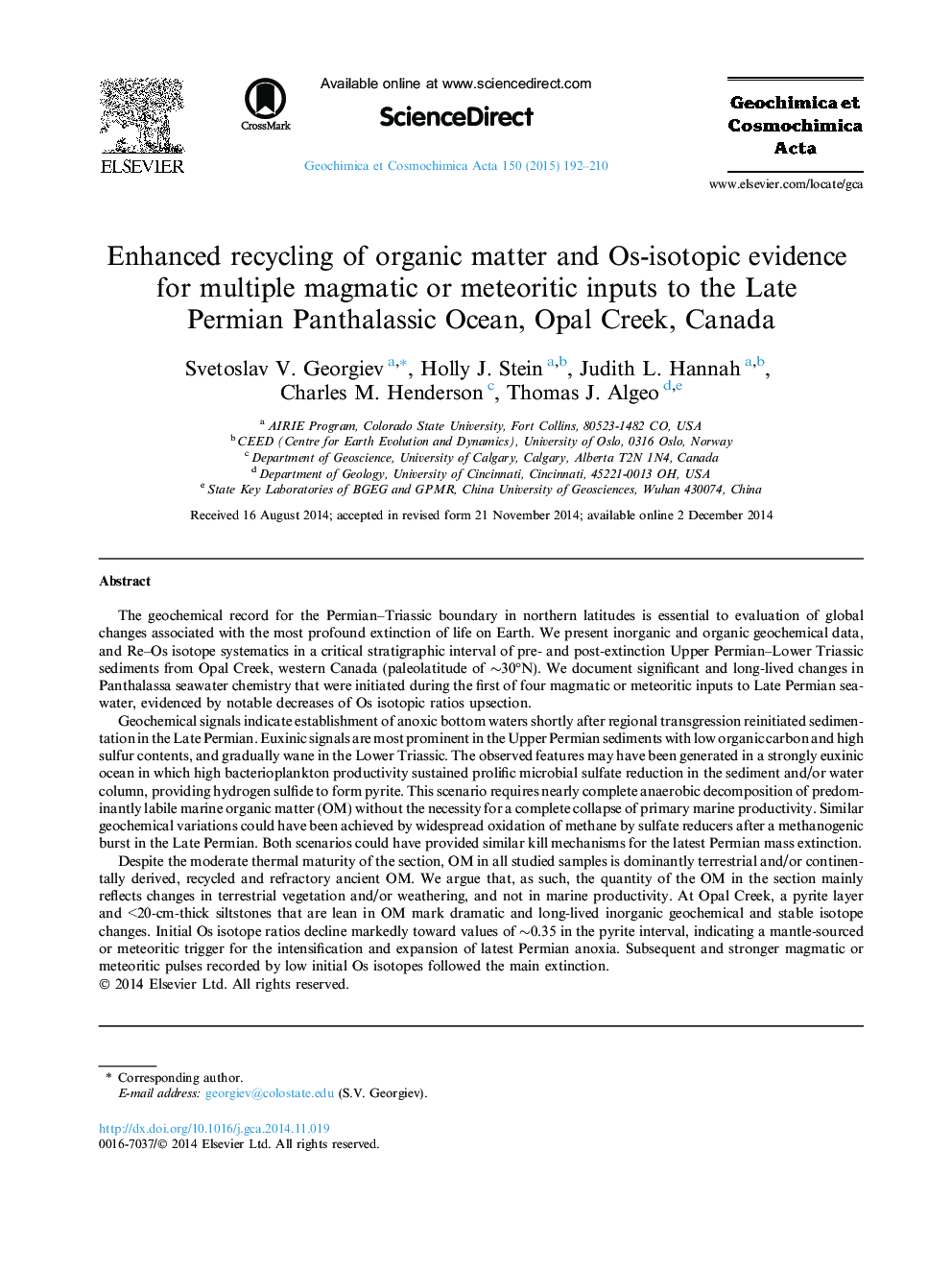| Article ID | Journal | Published Year | Pages | File Type |
|---|---|---|---|---|
| 4701991 | Geochimica et Cosmochimica Acta | 2015 | 19 Pages |
Abstract
Despite the moderate thermal maturity of the section, OM in all studied samples is dominantly terrestrial and/or continentally derived, recycled and refractory ancient OM. We argue that, as such, the quantity of the OM in the section mainly reflects changes in terrestrial vegetation and/or weathering, and not in marine productivity. At Opal Creek, a pyrite layer and <20-cm-thick siltstones that are lean in OM mark dramatic and long-lived inorganic geochemical and stable isotope changes. Initial Os isotope ratios decline markedly toward values of â¼0.35 in the pyrite interval, indicating a mantle-sourced or meteoritic trigger for the intensification and expansion of latest Permian anoxia. Subsequent and stronger magmatic or meteoritic pulses recorded by low initial Os isotopes followed the main extinction.
Related Topics
Physical Sciences and Engineering
Earth and Planetary Sciences
Geochemistry and Petrology
Authors
Svetoslav V. Georgiev, Holly J. Stein, Judith L. Hannah, Charles M. Henderson, Thomas J. Algeo,
